In the museum Louvre collection [MND 1550] there is a haunting portrait of a young woman from Apollonia Pontica, today Sozopol, Bulgaria. The bust was made of plaster (gypsum), ca 120-150 CE.
According to description in the catalog: Apollonia Pontica from the collections of the Louvre and Bulgaria Museums, it is believed that it may be a portrait made on the basis of a posthumous imprint of the woman’s face.
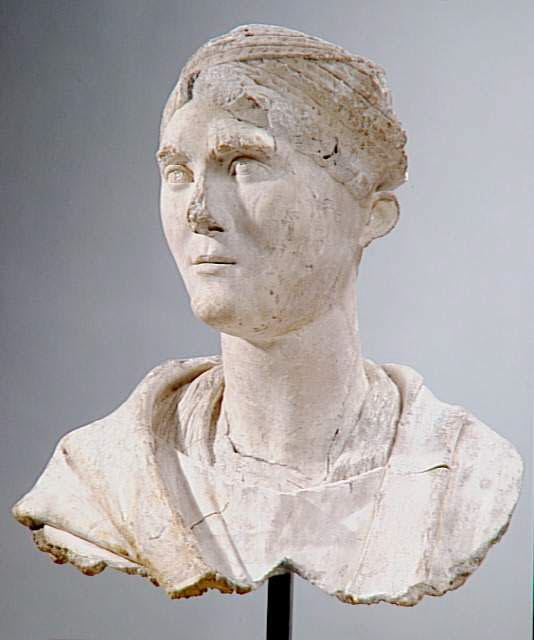


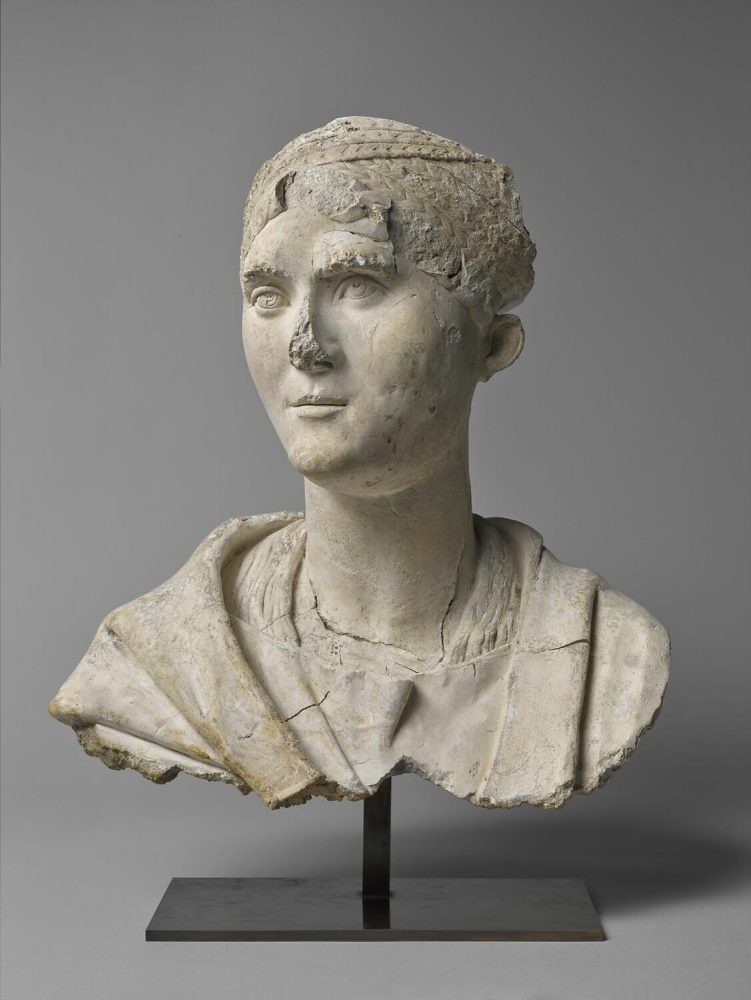
© 1990 RMN-Grand Palais (Louvre Museum) / Hervé Lewandowski
“the sunken sides of the face, the deep eye sockets, the half-open mouth, the deformed arch of the left eyebrow and the smooth and inexpressive countenance suggest that a death mask was used on the face of a deceased woman. (…)
This explains the inaccuracy or clumsiness in conveying some details such as eyebrows, hair on the back of the head and on the scalp or abnormally small ears, while other parts of the face have apparently been reworked: eyelids, irises and pupils are later sculpted in the mold; the braid, which makes the transition between the forehead and the hair by making an initial casting, is especially carefully transferred.(…)
The practice of making posthumous castings has been known since Pharaoh’s Egypt. In Rome the ancestral cult also resorted to it: the face of the deceased was cast in plaster & a wax positive was extracted to decorate rooms in Roman dwelling (domus), to serve the family prestige.
Due to their purely utilitarian nature, gypsum molds have rarely reached us, except for that of Claudia Victoria, opened in 1874 on the Place du Trion in Lyon (Lugdunum Museum and Roman Theaters) and found in 1970 in El Jem (formerly Tisdrus in Tunisia).
The latter was found in the workshop of a plaster mold maker from the 3rd century AD along with a positive cast of a woman’s bust, whose eyes and some details have been reworked.”
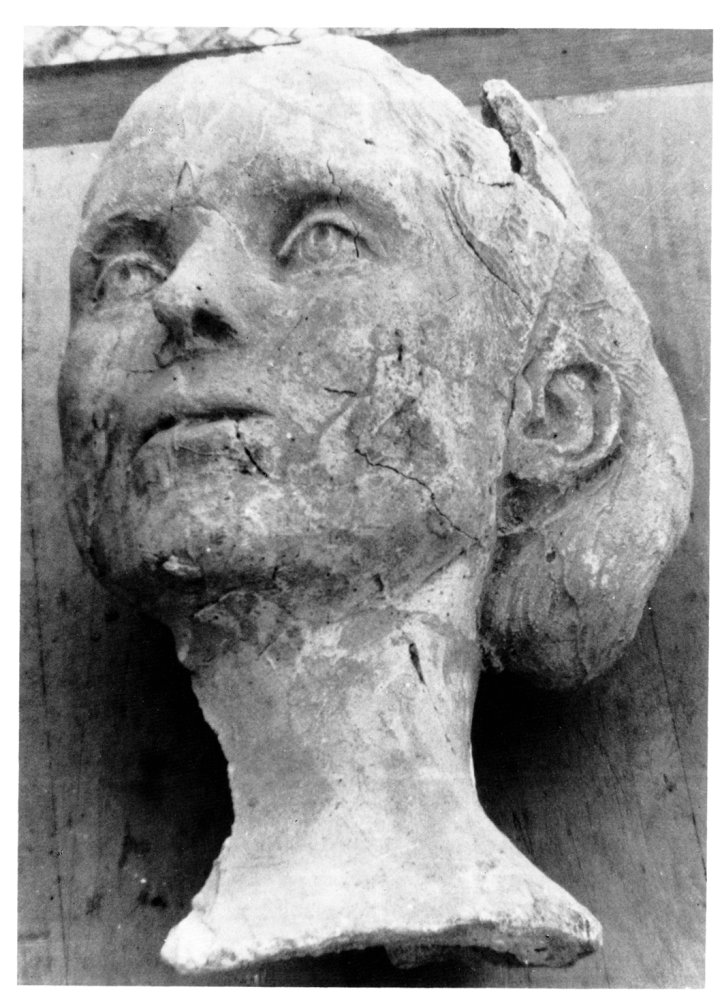
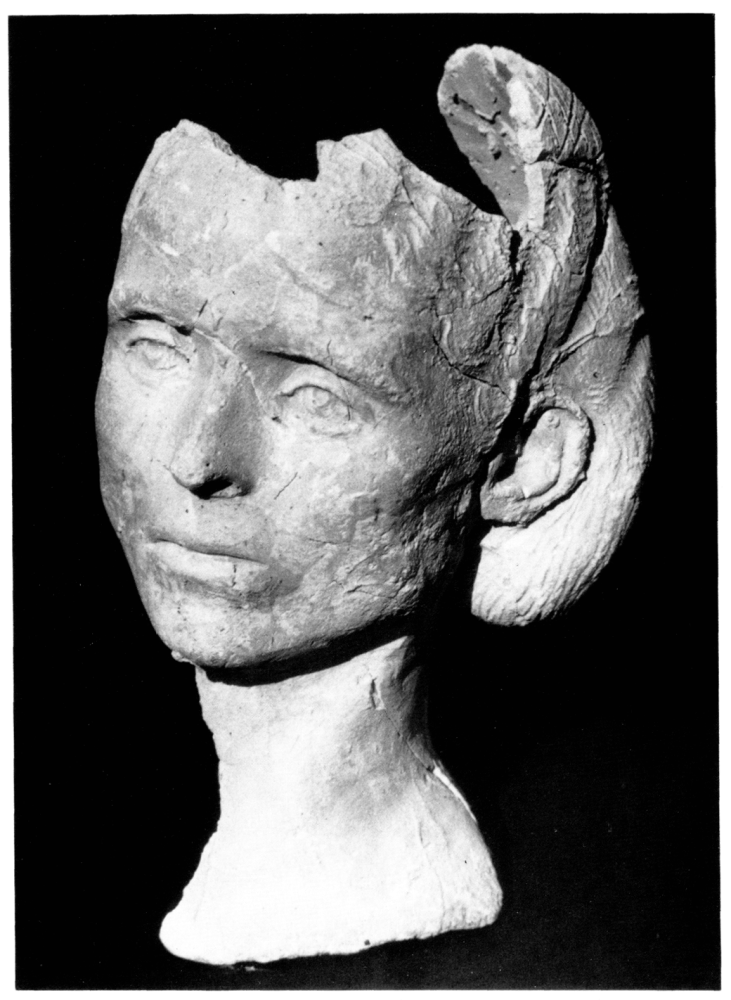
death-mask of Claudia Victoria, a Roman girl who died aged 10 years, 1 month and 11 days. Her mother kept the memory of her daughter by taking an imprint of her face; once her features had been reproduced, the plaster mold was placed in Claudia’s tomb. c.100 AD, Lyon
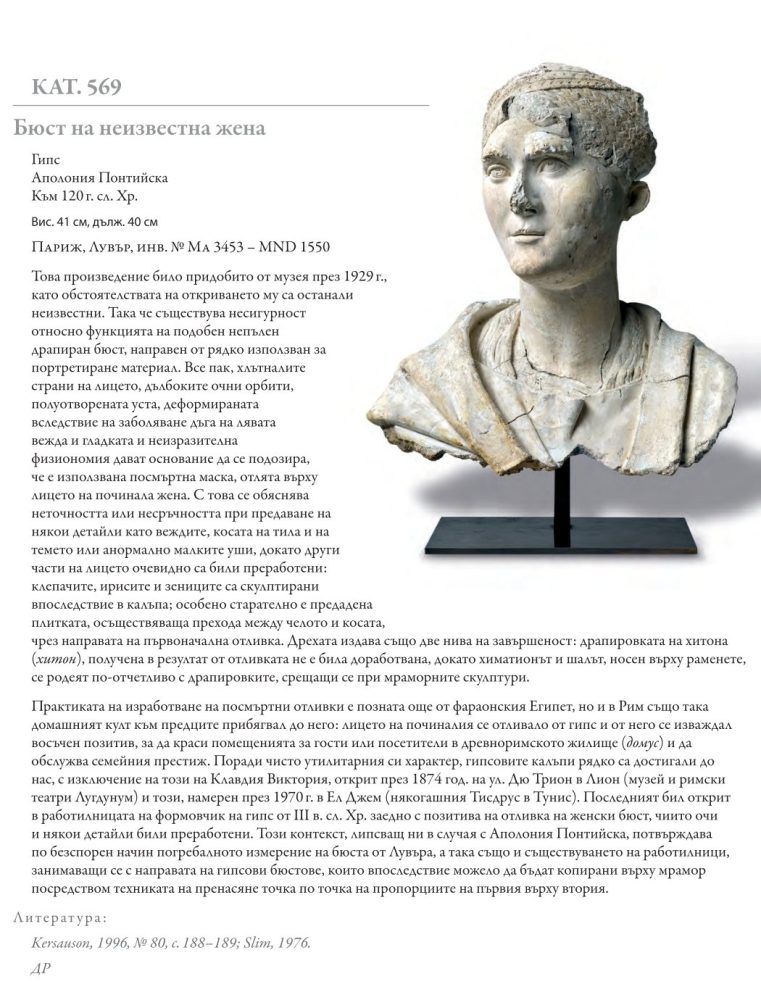
- Аполония Понтийска. По стъпките на археолозите. Колекции на Лувър и български музеи [Catalog: Apollonia Pontica from the collections of the Louvre and Bulgaria Museums]
Alexandre Baralis, Nedev Dimitar, Margarit Damyanov, Yavor Ivanov, Milena Krumova, Marie-Hélène Delavaud-Roux - Masques mortuaires d’El-Jem (Thysdrus) [article] Hédi Slim https://www.persee.fr/doc/antaf_0066-4871_1976_num_10_1_984
- Gorka López de Munain https://ceiss.academia.edu/gorkalopezdemunain
- Memoria and Damnatio Memoriae. Preserving and erasing identities in Roman funerary commemoration, in M. Carroll and J. Rempel (eds.), Living Through the Dead. Burial and Commemoration in the Classical World. Oxford: Oxbow, 2011, 65-90 https://www.researchgate.net
- ‘Breaking the Mould’ Roman Non-Elite Plaster Death Masks: Identifying a New form of Funerary Commemoration and Memory By KELSEY MADDEN https://assemblagejournal.files.wordpress.com/2017/11/breakingthemould-pdf.pdf
- http://www.gizapyramids.org/static/pdf%20library/hawass_gs_hoffman.pdf
- https://www.thevintagenews.com/2016/08/25/ancient-death-masks-warrior-race-unearthed-siberia/?chrome=1
- https://siberiantimes.com/science/casestudy/features/f0170-haunting-new-find-of-death-masks-from-ancient-siberian-warrior-race/
- https://www.cambridge.org/core/journals/antiquity/article/pastoralists-and-mobility-in-the-oglakhty-cemetery-of-southern-siberia-new-evidence-from-stable-isotopes/7021EF84EFA3AD415AAC778FD5C19258
- https://stringfixer.com/tags/tashtyk
- https://www.facebook.com/bronzeagecollapse/posts/tashtyk-culturehaunting-new-find-of-death-masks-from-ancient-siberian-warrior-ra/1399670363553362/
